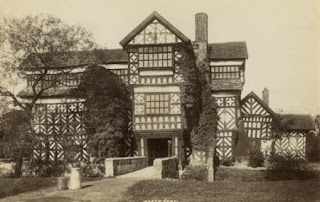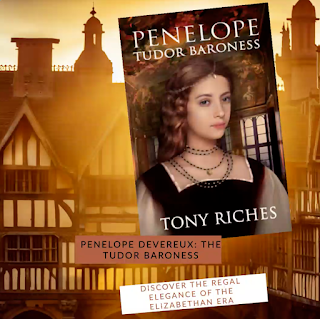The history of Little Moreton Hall
Little Moreton Hall
This was a house built to impress. It is a lasting reminder of the sophistication and craftsmanship of the Tudor era. The first records we ever have of the Moretons go back to the late 13th century. The Moretons most likely developed their wealth following the Black Death in 1348 and the Dissolution of the Monasteries in King Henry VIII’s reign. The Moreton family bought vast amounts of land, which was an excellent move for the family, as, by the mid-16th century, the Moretons owned 1,360 acres of land. It was mainly from the income of the estate that allowed them to build Little Moreton Hall with little interruption, expanding and improving the manor from the early 16th century up until the Civil War in 1642.
Once the civil war broke out, no one could hide or escape. As the battle between royalists and parliamentarians raged, William Moreton III was arrested, we don’t know why, but the most likely reason was that he was a monarchist. When William was eventually released, his property was confiscated, and he was forced to live at enemy headquarters. The family was allowed to rent Little Moreton from Oliver Cromwell’s parliament, however, at high rates, it was bound to send them into destitution. In the space of one generation, they had gone from wealthy to near ruined. This had huge implications for the future of Little Moreton Hall. Once the Moreton family had truly fallen from grace, William’s children could not afford to maintain Moreton Hall. They decided to rent out parts of Moreton Hall to relatives and then a succession of tenant farmers.
Little Moreton Hall was rented out for over 200 years, although the family still visited. The most famous tenant farmers we know of were the Dales. They rented Little Moreton Hall for seven decades, spanning from 1880 until 1955.
Once the national trust owned Little Moreton, the Dales had become caretakersAfter 1913, the house was open to the public, and the Dales gave tours and served tea to the public from 9am till dusk all year round.
However, they perhaps didn’t appreciate the value of the house as we would now, an octagonal table, from the late 17th century, was used as an ironing board by Kathleen Mary.
By the late 1800s, it was clear that the house was deteriorating.
In the 18th and 19th centuries, Little Moreton Hall fell into neglect, with neither tenants nor landlords giving the place the care it desperately needed.
In 1797, for example, letters between the owner, “William Moreton Moreton”, and the estate manager mention that the Little Parlours chimney had blown down in a storm.
However, the estate manager reported to his landlord that “the mansion is the same as you last saw it”… this may be because Victorians in this period loved decaying buildings and found them as inspiration for writing poems or books. The long gallery was added in the late 16th century, and although it may be gorgeous. It has made the house visibly crooked, and when walking up the path towards the manor you can see it dipping almost instantly.
In the late 1800s, Elizabeth Moreton added support beams to help support the integrity of the house.
In the present day, the national trust spends thousands to keep up the maintenance of the house, and it is certainly a worthwhile expense for the house to buckle beneath its own weight. The massive burden of its stone-slabbed roof bears down on crooked, sagging timbers, apparently sending the lot into the moat below. The first question people ask when they first arrive is not how it came to be built, but how it still stands. For its history, it was only ever owned by one family.
The long gallery is precariously placed atop the first floor. Although the long gallery gives the house so much character, its dramatic shape and size, have led to Little Moreton Hall's's's downfall…
Most timber-framed houses were built one floor at a time, with the ceiling of one forming the floor of the other. So the long gallery should have been positioned directly over the frame underneath, but it wasn’t. It has no direct support and, to make matters worse, the roof is covered with heavy grit-stone slabs. Yet the decision to build the long gallery in this way may have been Elizabeth Moreton, who was wealthy and had strong religious convictions was the one who began the long process of saving Little Moreton from collapse, installing metal tie-rods in the long gallery and gallery chamber. This stabilised the whole south range. She also restored the chapel, and it was she who considered the long-term future of the house. In the same year she inherited the house, she wrote to her cousin Charles Thomas Abraham and asked him to become her heir. However, there was one condition to Elizabeth's bequest, that Little Moreton never be sold.
Elizabeth had made a wise decision when she chose her cousin Charles, as he was as committed to Little Moreton's restoration as she was. After Elizabeth had passed away, Charles soon realised that this restoration was beyond his means, so he turned to specialists.
In 1937, he offered Little Moreton to the National Trust. A public appeal raised enough money to cover various costs, and In 1938, Little Moreton Hall was handed over to the National Trust. For the first time in its history, the hall had an owner who wasn't connected to the Moreton family.




Comments
Post a Comment